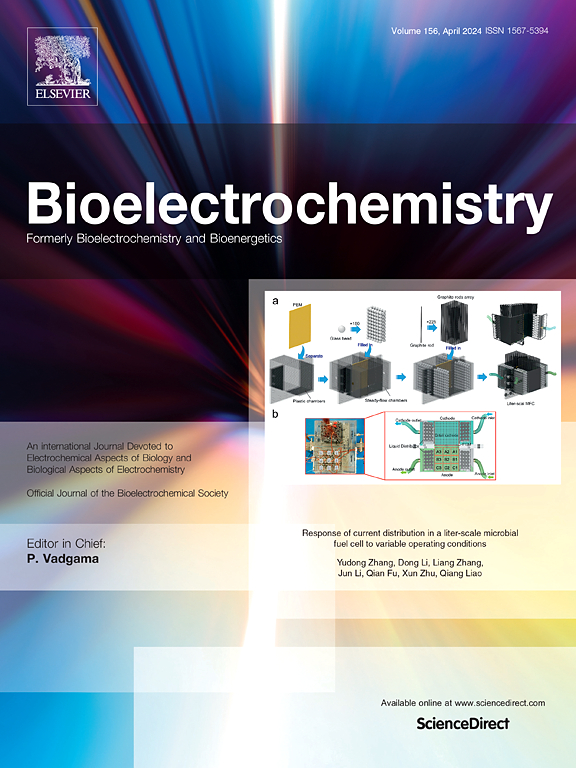Electrochemical reduction boosted Luminol cathodic electrochemiluminescence for trace chiral recognition of alanine enantiomers
IF 4.8
2区 化学
Q1 BIOCHEMISTRY & MOLECULAR BIOLOGY
引用次数: 0
Abstract
Electrochemiluminescence (ECL) is highly recommended in chiral recognition. ECL-based chiral sensors highly desire a sensitive sensing interface for signal conversion and absolute chiral discrimination. The ECL emission based on a luminol-dissolved O2 system received much attention due to its nontoxicity and stability. However, the drawback of weak ECL emission hinders the fast signal conversion from chiral discrimination to ECL response. Herein, the amplification strategy of ECL emission is proposed based on the electrochemical reduction enhanced O2 reduction reaction (ORR). Cadmium sulfide decorated on carbon-nanotubes (CdS/CNTs) with easy synthesis, wide-pH operation, and suitable valence-conduction band position is employed. Upon cathodic scan, the electrons transfer from electrochemically reduced-CdS/CNTs to O2 and H2O2, thus accelerating the generation of reactive oxide species (ROS) and furthering ECL emission. Furthermore, the chiral ECL sensing interface is well-designed by combining the chiral recognition of D-amino acid oxidase (DAAO) with the signal transduction and amplification of CdS/CNTs-enhanced ECL emission. During DAAO-catalyzed enantioselective-oxidations of alanine, the O2 is converted to H2O2, which tunes the ROS generation. With synergetic regulations of ROS generation by nano-derived CdS/CNTs and bio-derived DAAO, alanine enantiomers are highly discriminated and the L-alanine is quantitatively detected with the most competitive detection limit so far (0.014 fM).

求助全文
约1分钟内获得全文
求助全文
来源期刊

Bioelectrochemistry
生物-电化学
CiteScore
9.10
自引率
6.00%
发文量
238
审稿时长
38 days
期刊介绍:
An International Journal Devoted to Electrochemical Aspects of Biology and Biological Aspects of Electrochemistry
Bioelectrochemistry is an international journal devoted to electrochemical principles in biology and biological aspects of electrochemistry. It publishes experimental and theoretical papers dealing with the electrochemical aspects of:
• Electrified interfaces (electric double layers, adsorption, electron transfer, protein electrochemistry, basic principles of biosensors, biosensor interfaces and bio-nanosensor design and construction.
• Electric and magnetic field effects (field-dependent processes, field interactions with molecules, intramolecular field effects, sensory systems for electric and magnetic fields, molecular and cellular mechanisms)
• Bioenergetics and signal transduction (energy conversion, photosynthetic and visual membranes)
• Biomembranes and model membranes (thermodynamics and mechanics, membrane transport, electroporation, fusion and insertion)
• Electrochemical applications in medicine and biotechnology (drug delivery and gene transfer to cells and tissues, iontophoresis, skin electroporation, injury and repair).
• Organization and use of arrays in-vitro and in-vivo, including as part of feedback control.
• Electrochemical interrogation of biofilms as generated by microorganisms and tissue reaction associated with medical implants.
 求助内容:
求助内容: 应助结果提醒方式:
应助结果提醒方式:


